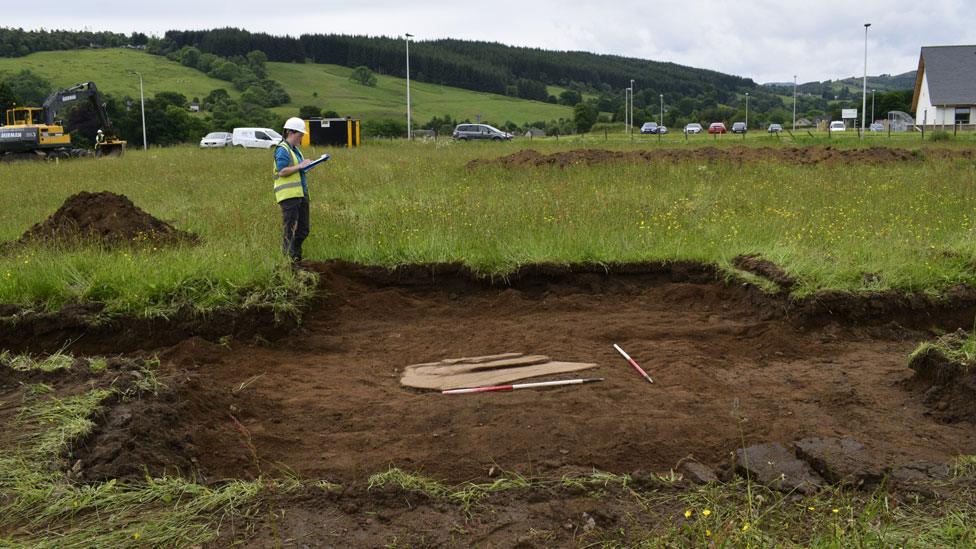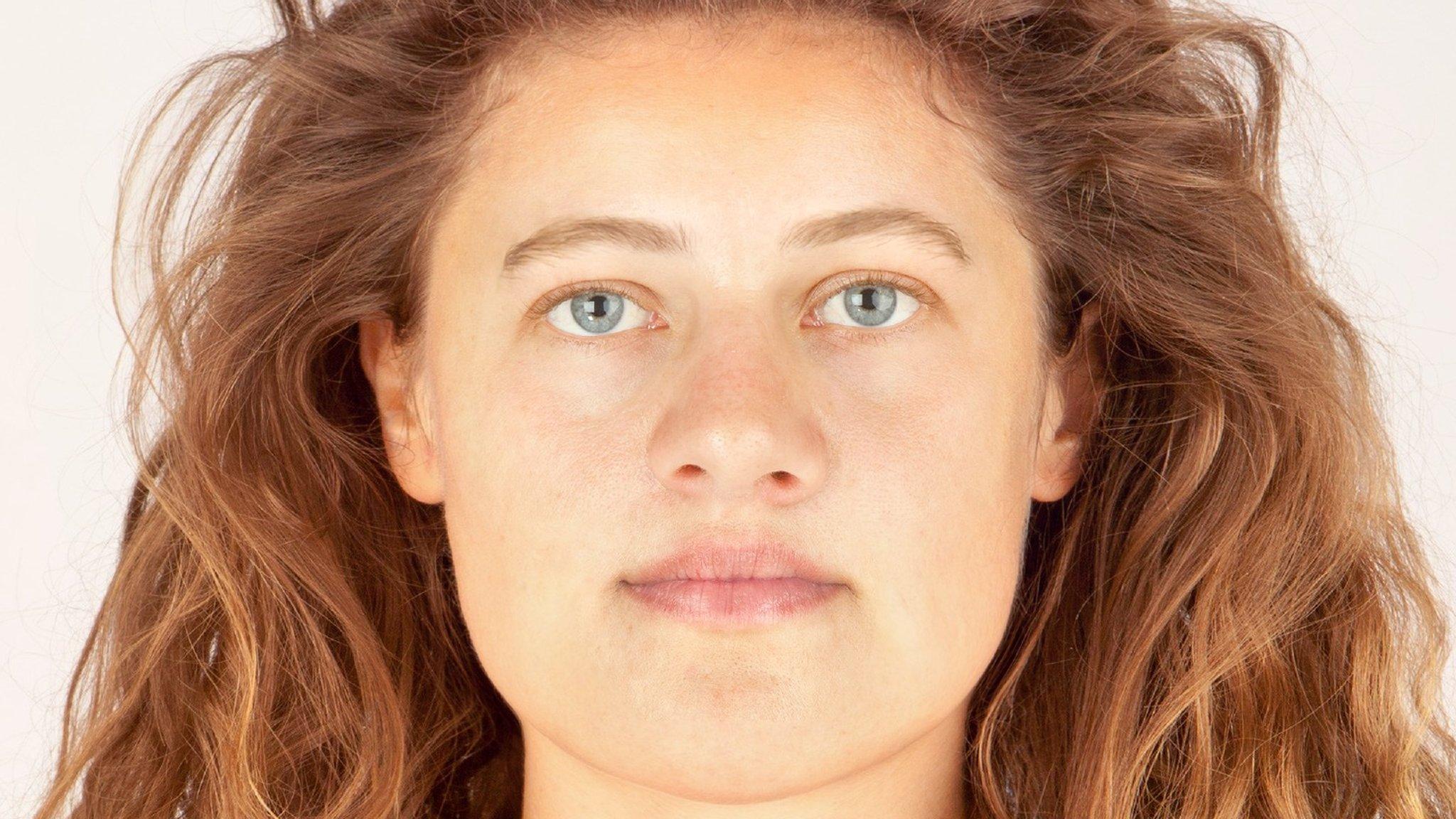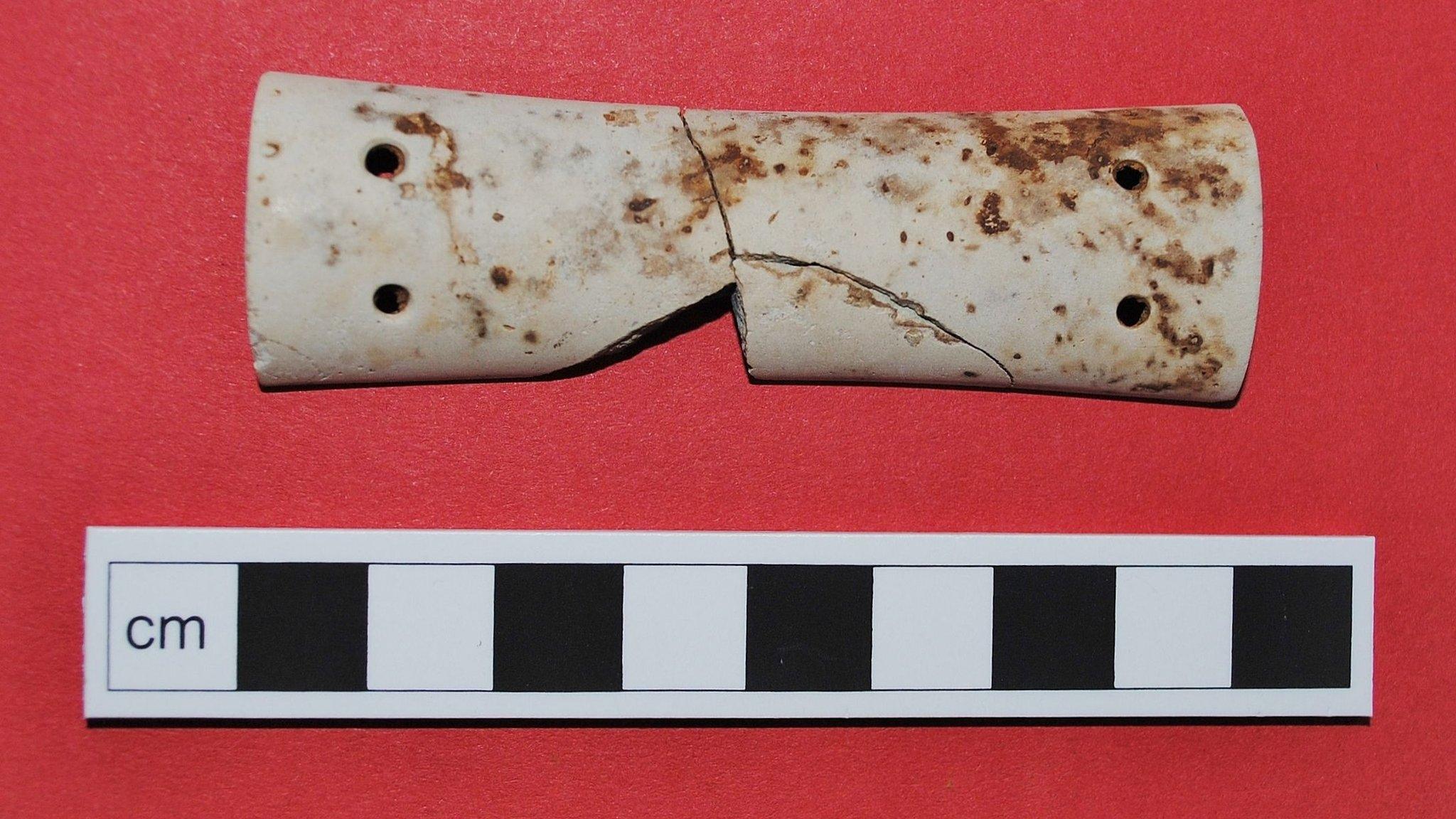Evidence of 'special site' for Bronze Age burials near Loch Ness
- Published

The latest grave to be found is pictured before and after soil was removed from inside it
Archaeologists say they are finding increasing evidence that a site near Loch Ness was important for burials in the Bronze Age.
A second 4,000-year-old grave has been located in an area being developed in Drumnadrochit where a stone-lined grave known as a cist was found in 2015.
The discovery two years ago included human remains.
The latest grave had filled with soil causing degradation to the pit, but a single Beaker pot was found.
Archaeologists said the decorated pot may have held an offering to the person who was buried in the cist.
The first grave was discovered during work constructing the new Drumnadrochit Medical Centre and excavated by AOC Archaeology Group.

The Beaker pot that was found in the second grave
Earlier this year, AOC archaeologists were called back to the area by Compass Building and Construction Services and Loch Ness Homes, who are building a mix of affordable and private housing on land near the medical centre.
Mary Peteranna, operations Manager for AOC Archaeology's Inverness office, said: "The discovery of a second Bronze Age cist on the site provides increasing evidence for the special selection of this site in the prehistoric landscape as a location for ceremonial funerary activity.
"This cist, along with the medical centre cist and a second burial pit, is generating much more information about the prehistory of Glen Urquhart.
"Historically, there was a large cairn shown on maps of the area but you can imagine that centuries of ploughing in these fields have removed any upstanding reminders of prehistoric occupation."
The archaeologist added: "During the work, we actually found a displaced capstone from another grave that either has not survived or has not yet been discovered.
"So it's quite likely that these graves were covered by stone cairns or mounds, long-since ploughed out."

Archaeologists were called back to the site in Drumnadrochit earlier this year
Beaker pots, with their distinctive flared necks and geometric patterns, have frequently been found at Bronze Age burial sites along with other artefacts, such as arrowheads, wristguards and copper knives.
Archaeologists described the new Drumnadrochit pot as a small Beaker with "simple incised decoration" similar to other Scottish examples dating to between 2200-1900 BC.
It is similar in size to one found on the medical centre site in 2015, but with a less ornate design.
Archaeologists said future analysis would confirm if, like the medical centre Beaker, it contained an offering at the time of burial.
Important Bronze Age finds have been made across the Scottish Highlands.
They include the remains of a woman known to archaeologists as Ava, an abbreviation of Achavanich where her bones were discovered in 1987.
Last year, a facial reconstruction of her face was made by forensic artist Hew Morrison, a graduate of the University of Dundee.
- Published29 July 2016

- Published3 February 2015
